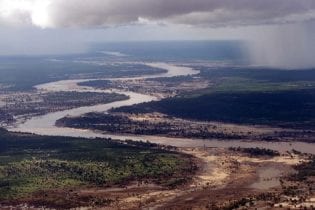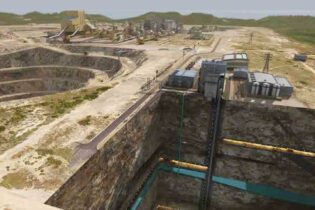Q. What is the core function of the Department of Water Affairs?
A. The Department of Water Affairs (DWA) performs various functions as part of its sector leadership responsibilities, but the driving force behind the Blue Drop and Green Drop Certification programmes is regulation. The results of these programmes assist other functions such as support and sector development since credible information is generated to inform on shortcomings within specific municipalities. Nevertheless these programmes are not voluntary, but part of the incentive-based regulation initiative that necessitates access to information to determine water services performance in the drinking water quality and wastewater services domains. Q. Can you give me some background information on the Blue and Green Drop programmes? Why was it started? A. Drinking water quality regulation in South Africa commenced in 2004 and at a rapid pace the department got municipalities to commence with monitoring of tap water quality. Information was forthcoming but not necessarily with the level of credibility that left the department confident on the efficacy levels of drinking water treatment and management operations in general. The principle according to which drinking water globally was regulated depended on water quality results alone. The occurrence of major outbreaks in Delmas (2005 and 2007) as well as Ukhahlamba (2008) necessitated a rapid rethink in the approach to drinking water quality regulation. The judgment of Judge O’Connor in the Walkerton case in Canada (2000) was studied to note his recommendations and together with the afore-mentioned local incidents, planted the seed for a unique approach to regulation. It was also identified that inadequate wastewater management played a role in all four incidents used to shape the incentive-based regulation concept and that was where the Green Drop concept was stimulated. It is accepted that wastewater is the first and most important barrier in a multi-barrier concept for the supply of safe drinking water and this is why the wastewater element was linked to this concept as well. The concept was approved and launched in September 2008 and the first report was released in May 2009. Q. With regard to Blue and Green Drop accreditations, what criteria is each judged on? A. All risk elements to the supply of safe drinking water was considered in the case of Blue Drop certification and extensive criteria were developed and incrementally introduced to the sector. This included various sub-requirements under each of the main key performance areas listed; the key ones being: Water Safety Planning (risk management); Process Control (skills); Drinking Water Quality Compliance (SANS 241); Management and Local Regulation; and Asset Management. On the wastewater side Green Drop requires a high level of efficiency in the following: Process Control and Maintenance; Monitoring Programmes; Submission of Results; Effluent Quality Compliance; Risk Management; Local Regulation; and Asset Management. These requirements are not all minimum requirements set by legislation but include international best practices which form part of the incentive-based concept. The DWA expects much, and recognition in form of certification is given to those who achieve95% (Blue Drop) and 90% (Green Drop). It is regarded as unfortunate that the Blue and Green Drop programmes are sometimes mentioned without comprehending the constant high volume of work required throughout the period (within the assessment cycle), to ensure impressive performance during the audits. Municipalities that do well (not only those achieving Blue Drop or Green Drop) must be saluted for their efforts since the manner in which municipal officials embraced these programmesis most impressive. Q. From a government perspective, how do you feel the Blue and Green Drop Awards have improved water and wastewater standards within municipalities? A. Note the results in the last reports, and see it is surely having an effect of improvement that surpasses my expectations. No one individual can take credit for this huge improvement since it has to be noted that the manner in which these concepts were embraced by women and men in the sector, is reason for the improvement. Most notable would be the pride that was restored in those taking responsibility for water and wastewater treatment. They now have something to aspire to and that is in-line with the objectives of incentive-based regulation. It also made inroads in restoring the trust of the general public in the manner water quality is being managed, but we are cognisant of the fact that we have more work to do in this regard. But after all these two programmes were designed to inspire people to greater heights and that was achieved to a large extent. But there are also those who are lagging behind and the department is giving attention to those municipalities through both support and regulation initiatives where appropriate.Q. In the last five years, what have been the biggest challenges facing the DWA either from a national, provincial or municipal level, and what has been the way forward on these issues?
A. Lack of resources to implement the requirements of drinking water and wastewater concepts is the biggest challenge. But instead of sitting idly waiting for something to happen, these two programmes allow for an incremental approach towards improvement. Therefore would it be good not to judge municipal performance based upon whether they achieved Blue Drop or Green Drop but rather to note improvement and to give acknowledgement for that. You can be assured behind each case of improvement is a municipal or water board official who did their best in spite of the lack of resources. As part of the way forward the department introduced a joint operation between Economic and Technical Regulation. The Regulatory Performance Measurement System (RPMS) audits are done jointly with the Blue and Green Drop to ensure that the required mechanisms are in place to enhance institutional financial viability. RPMS is currently being re-engineered to ensure that the risk-based element is introduced to the benefit of municipal financial management as it links to the relevant water services technical functions. Q. What are your comments on the results from the 2012 Blue Drop Awards? A. Most encouraging but also disappointing when considering that there are a few municipalities who just show no intent to improve. Yet one is not in a state of despair because the rapid rate of overall improvement suggests that incentive-based regulation is a successful formula to stimulate excellence. Improvement over such a large spectrum would not be possible if the department solely depended on conventional regulation. But it has its work cut out to go beyond incentive-based regulation where there is an evident reluctance or inability to improve. Q. Taking into consideration the 2011 Green Drop Awards, what are your expectations from the 2013 entrants? A. It is expected that all Water Services Authorities will show improvement regardless of the challenges faced. There is no such thing as a Green Drop entrant – all are required to be subjected to audits. The department is in the process of gearing itself for whole-scale wastewater services audits at all municipalities and water boards. Q.How does the state of South Africa’s drinking water compare to other African (and some international) countries? A. Internationally only global figures are reported while we break it down into categories to expose risk areas. Yet we are confident that our cities and bigger towns, as well as most of the smaller municipalities are comparing very well with international standards. Note that it is also true that drinking water quality is not regulated in all countries which make wide-scale comparison a bit more difficult. The standard used in South Africa for drinking water quality (SANS 241) compares very well with the guidelines set by the World Health Organisation (WHO). This implies that should water comply with the standard it should also comply well with international standards. Every citizen has access to information on the quality of water in their area of residence or interest in South Africa at www.dwa.gov.za/mywateror on cell phone at my-water.mobi.





